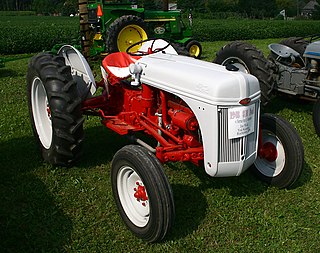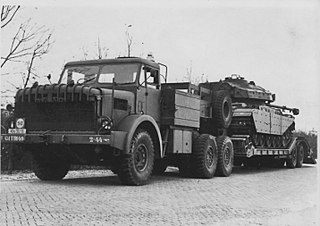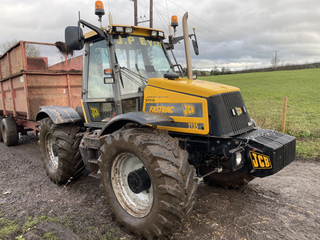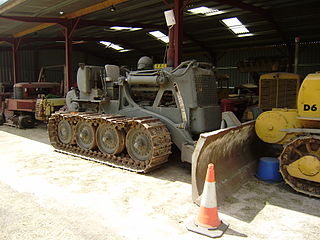TB 5-9720-11 (1944) gives the following detailed information:
TRACTOR, CRAWLER, DIESEL, 35 TO 40-DBHP, STANDARD, CATERPILLAR, D4
Manufacturer: Caterpillar Tractor Co. Stock No.: 78-8138.0-44 Peoria, Illinois Model: D4
1. General. — The D4 is designed for towing and all types of general construction work. Accurately located frame-holes are provided for attaching varied tractor equipment to adapt it for use in earth moving, road clearance, and airport construction work.
2. References. — For further information regarding this equipment, refer to: TM 5-3110; ASF Catalog, Section ENG 7-T31, ENG 8-T31.
3. Engine. — Make: Caterpillar. Model: D4. Fuel: Diesel commercial. Cylinders: 4. Bore and Stroke: 4}£ x 5K-in. Governed speed: 1400 rpm. Valve adjustment: 0.010-in. Firing order: 1-3-4-2. Equipped with Independent, 2-cylinder, 4-stroke-cycle gasoline starting engine.
4. Fuel, coolant, and lubrication data. — Fuel tank: 25-gal fuel oil. Radiator: 11 -gal water. Crankcase: 4-gal engine oil. Transmission: 5-gal gear oil. Final drive cases: 1%-gal gear oil each. Engine oil grade: OE-30 above 32 F, OE-10 below 32 °F. Gear oil grade: GO-90 above 32 F, GO-80 below 32 °F.
5. Speeds and drawbar pull. — Five forward speeds and one reverse. Reverse speed: 1.9 mph. Forward speeds with maximum drawbar pull are: 1st: 1.7 mph, 7852 lb. 2nd: 2.4 mph, 5811 lb. 3rd: 3.0 mph, 4541 lb. 4th: 3.7 mph, 3471 lb. 5th: 5.4-mph, 2230-lb.
6. Clutch. — Power is transmitted through dry type flywheel clutch to selective type change speed gear set. Each track is controlled by slow speed, heavy duty, dry multiple disc clutch.
7. Brakes. — Contracting band brakes.
8. Crawlers. — Gage, center to center of tracks: 44-in. Track length: 61%-in. Track shoe width: 13-in. Grouser height: 2 in. Track shoes, each side: 31. Ground contact: 1589 sq in.
9. Attachments. — The following attachments are issued as standard equipment with the D4 Caterpillar: ANGLEDOZER, LaPlante-Choate 4R. ANGLEDOZER, LeTourneau C-4. BULL- DOZER, LaPlante-Choate or LeTourneau A-4. POWER CONTROL UNIT, LeTourneau T-4. COMBINATION POWER CONTROL UNIT AND WINCH, LeTourneau, HN. WINCH, Hyster D-4A. WINCH, Hyster D4.
10. Dimensions. — Length: 121% 6 in. Width: 62 in. Height: 60% in. Drawbar height: 13%-in. Turning radius: 74-in.
11. Working weight. — Without attachments: 10,000-lb.
12. Shipping data. — Boxed for export (tractor only), completely assembled. No. of boxes: 1. Length: 126-in. Width: 68-in. Height: 69-in. Cubage: 343 cu ft. Weight: 11,600-lb.




















